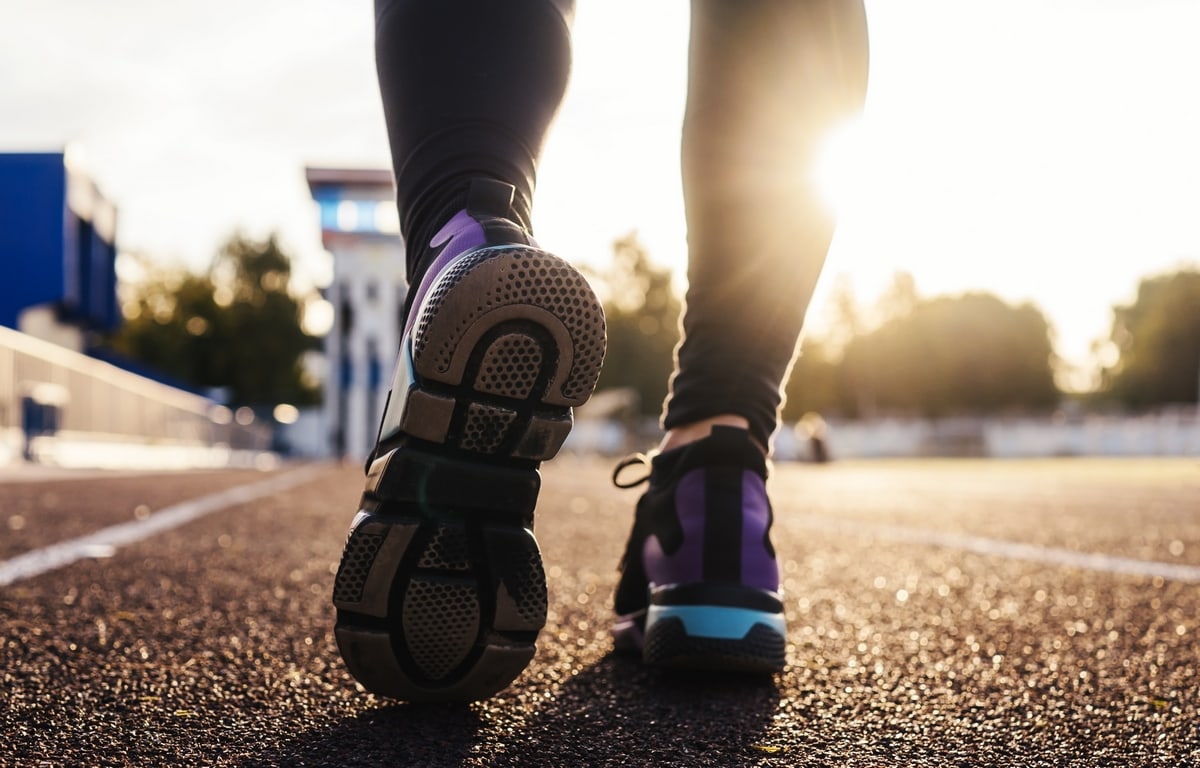Swollen legs: Causes and treatment
Leg swelling can occur in people of all ages and for many different reasons.
Nevertheless, leg swelling – whether in the calves, ankles or feet – is most often experienced by people whose work requires them to stand or sit for long periods.
Leg swelling in pregnant women is also typical.
One of the most common causes of swollen legs is chronic venous insufficiency.
- Please note that this article is for information purposes only and does not constitute medical advice.

Why do legs swell?
Swollen legs occur for many reasons.
It’s sometimes difficult to pinpoint a specific cause, as several factors can overlap to cause swelling in the ankles, feet or calves.
What situations, conditions and reasons cause swollen legs?
The most common causes of swollen legs are as follows:
- Prolonged standing or sitting (work requiring standing for long periods, or long bus or plane journeys) can lead to swelling of the legs.
- Chronic venous insufficiency, most often referred to by patients as varicose veins in the legs
- Deep vein thrombosis
- Circulatory failure, right heart failure
- Pregnancy

What causes swollen legs?
One of the main causes of swollen legs is chronic venous insufficiency, which includes varicose veins of the lower limbs, post-thrombotic syndrome, primary venous valve insufficiency and compression syndromes.
Normally, blood flows from the lower limbs to the heart via the venous system.
Thanks to the presence and efficiency of venous valves, this flow is constant and one-way.
When the valves are ineffective, blood starts to flow backwards, pressure in the venous system increases and venous outflow from the limbs slows down.
Venous hypertension and microcirculation stagnation contribute to excessive capillary permeability, resulting in edema and swelling of the lower limbs.
Also read: PRP: The secret of dense hair
At first, a feeling of heaviness in the legs appears, especially in the evening, after a day of activity.
This is followed by cramps in the calves, aggravated at night or after prolonged sitting or standing, paresthesias, tingling, swelling of the legs at first, which disappears after rest, and other trophic disorders of the skin, e.g. hyperpigmentation, telangiectasia, leg ulcers.
Also read about: Pedicure: Foot care
Another cause of leg swelling may be deep vein thrombosis, which is a medical condition involving the formation of blood clots in the veins of the lower extremities.
People over the age of 40, particularly certain obese individuals, with a history of trauma, particularly multi-organ trauma, and after prolonged immobilization, such as orthopedic surgery, are at greatest risk of developing this clinical condition.
Right-sided heart failure can also be a cause of edema.
When the heart is unable to pump blood through the body, blood begins to pool in the vessels at the bottom of the body, i.e. the lower limbs.
This leads to venous stasis and swelling.
Pregnancy, although a woman’s physiological condition, can also affect the development of leg swelling.

Treatment of swollen legs
Pharmacological treatment of swollen limbs and legs depends primarily on the cause of the swelling.
For the treatment of varicose veins in the lower limbs, it is very important to wear compression stockings, which must be chosen individually.
Thanks to compression, blood does not flow back into the superficial veins, and the muscle pump works more efficiently.
Pharmacological treatment is also effective, with regular use of diosmin, calcium dobesilate, rutin and hesperidin preparations.
Varicose vein medications should improve quality of life, reduce the formation of new lesions and alleviate the discomfort that accompanies varicose veins, i.e. the sensation of heavy legs, tingling and cramping in the calves.
If varicose veins are recurrent and the veins have completely ineffective valves, varicose vein sclerotherapy is an effective method. It involves injecting a chemical agent into the lumen of the varicose vein, damaging the vessel, causing an inflammatory reaction and eventually causing it to regrow.
In the case of tibial ulcers, recurrent varicose inflammation, symptomatic varicose veins and their enlargement despite conservative treatment, surgical treatment is required: removal of the varicose vein or ligation of the perforating veins.
Pharmacological treatment of deep vein thrombosis and swollen legs involves injections of low-molecular-weight heparin, nadroparin and enoxaparin into the subcutaneous tissue of the abdomen.
If the risk is high, elastic stockings and intermittent pneumatic compression must be worn at the same time.

Home remedies for swollen and tired legs
Before swelling of the lower limbs develops, it is necessary to reduce the risk of its appearance.
It’s important to avoid dehydration, which causes the blood to thicken in hot weather or when staying in dry, heavily heated rooms, so drink plenty of fluids, preferably mineral water or unsweetened juices.
Hydrating the body facilitates the elimination of toxins, which also helps the veins to function more efficiently.
To prevent swollen legs, you can do a few simple exercises and modify your lifestyle, for example:
- Limit salt consumption, which causes water retention in the body
- When standing or sitting, change position regularly.
- Use positioning therapy, lying down with your legs in the air, for about 10-15 minutes each, several times a day, 3-4 times
- Reduce body weight, obese people are much more likely to suffer from swollen legs
- Thigh-to-foot massage using herbal oils or special massagers
- Avoid high temperatures, prolonged exposure to the sun, saunas and hot baths.
- Use gels containing horse chestnut and arnica extracts
- Regular use of diosmin preparations
- Avoid walking in high heels
- Exercise regularly, walking, swimming or cycling as much as possible or, if you have a sedentary job, get up more often and do stretching exercises
- Take the stairs.
This exercise improves your muscular pump.
Walk on uneven ground as much as possible to keep your veins supple. -
If you have a sedentary job, put a cardboard box under your feet.
From time to time, wiggle your toes, rotate your feet in circles and flex your calf muscles – it’s great exercise for your veins.
Don’t put one foot in front of the other.
What to do about swollen legs during pregnancy?
During pregnancy, venous pressure in the lower limbs increases due to the pressure exerted by the enlarged uterus on the inferior vena cava and common iliac veins, resulting in swollen legs during pregnancy.
An additional risk factor for swollen legs during pregnancy is the fact that a woman’s circulating blood volume increases during this period.
Legs usually swell in the evening, accompanied by numbness, tingling and a feeling of heavy legs.
After rest or in the morning, swelling is generally absent.
So it’s vital not to overexert yourself during pregnancy, or stay on your feet for too long.
It’s best to rest with your legs elevated.
It’s very important to adopt the correct sleeping position during pregnancy.
Women should lie on their left side to facilitate blood circulation in the inferior vena cava, from the legs to the heart.
Also read: how to choose a (safe) sun cream?
It’s also important to wear appropriate, comfortable shoes made from natural materials and loose-fitting tights.
Don’t forget to limit your salt intake.
Avoid tight tights, pants and underwear, abdominal and groin compression, socks and uncomfortable high-heeled shoes.
Wear anti-edema or relaxing tights.
All these remedies for swollen legs should reduce the discomfort suffered by pregnant women.

When should I go to the doctor for swollen legs?
Swelling of the feet and legs due to water retention is not usually a sign of a serious health problem, and is a common complaint.
However, it can sometimes be caused by other factors, such as heart problems, kidney failure or chronic venous insufficiency.
If your symptoms worsen, if your feet are swollen all day, if you feel pain or if you notice skin changes, it’s important to contact your GP.
Immediate relief for heavy legs
The feeling of heaviness and swelling in the legs usually disappears quickly if you try this:
How can I get my legs to deflate quickly?
Raise your legs higher than the rest of your body and hold them there for 10 minutes, or lean them against a wall.
A cold shower or alternating hot and cold showers can bring relief.
Cold water constricts dilated blood vessels, providing rapid relief.
As an option, you can wrap your ankles and legs in a damp bandage cooled in the fridge for 15 to 20 minutes after returning home.
Simple foot exercises such as making circles with your feet help restore blood circulation.
“One of my biggest dreams is that my company will be able to change the course of one family’s life, one child at a time by giving back to the community.”







